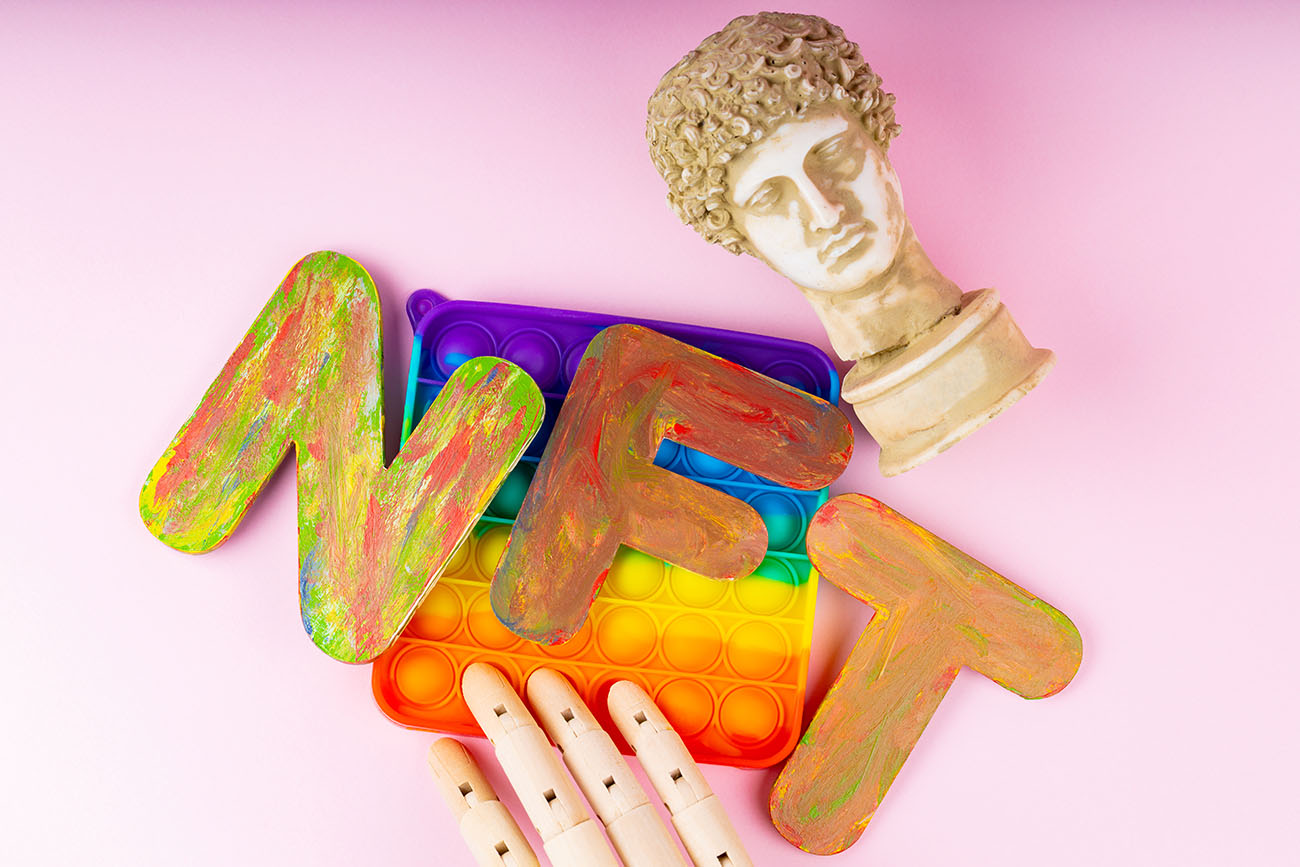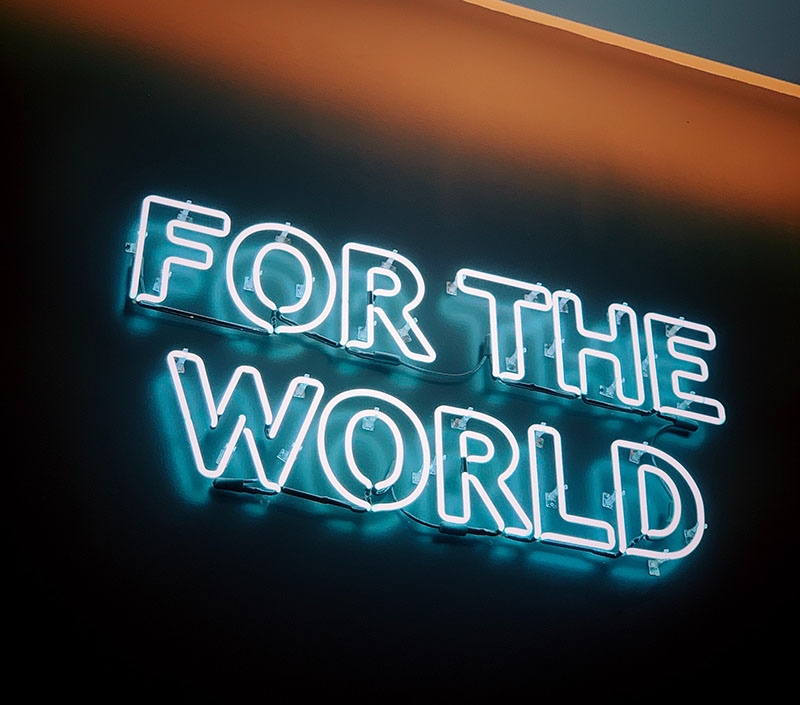Today, many people continue to debate the actual value of non-fungible tokens (NFTs). There's also a lot of debate about whether they're here to stay or just a passing fad.
Joining this debate are celebrities, many of whom have given interesting reactions to the concept of NFTs. Recently, Keanu Reeves weighed in during an interview for the latest Matrix film, in which he merely laughed at the idea.
There are nearly as many people today who are NFT believers as there are NFT detractors. However, both parties' views are myopic to a certain extent, with people on both sides of the debate focusing on the present instead of the future and the rise of NFTs.
The fact is that NFTs have a very bright future ahead as they continue to evolve with the times and latest technology trends. As a result, this evolution will render the majority of the arguments for and against NFTs equally irrelevant.
To give you some insight into the rise of NFTs, the following will provide an overview of the industry today, along with the evolutionary path the industry is likely to take.
What are NFTs?

NFTs, or non-fungible tokens, are essentially cryptographic signatures of images or other types of media, including 3D glTF (GL Transmission Format) files. These files are stored on cryptocurrency blockchains, which enables a single individual to have clear providence and ownership of the signed content.
The sole owner can also transfer and sell this media on secondary markets.
In many ways, you can view NFTs as ownable and transferable digital certificates of media files.
Criticisms of NFTs
At this time, there are many arguments both for and against NFTs, largely because it is a new type of technology that people are just beginning to understand. Until there's a deeper collective understanding of NFTs and their implications, along with how they fit into everything else, there will continue to be arguments in favor and against this technological development.
The following are some of the specific criticisms of NFTs that some have expressed:

Environmental impact
The first and most serious issue concerning the rise of NFTs is their environmental impact, which we explore in greater depth in a separate article. Unfortunately, the most successful cryptocurrencies are highly inefficient and contribute significantly to CO2 emissions across the globe based on their design.
In fact, while cryptocurrencies are intended to be entirely virtual, without any physical component that could otherwise have an impact, they consume an estimated 0.2% of the world's energy.
The inefficiency of cryptocurrencies plays into the problem with NFTs: the NFT market is making cryptocurrencies even more popular than they've already been in recent years. In turn, it's arguable that individuals involved in the NFT market are contributing to global warming through cryptocurrency transactions used to sell and purchase this media.
The "right-clicker" argument
Another criticism of NFTs has to do with something known as the "right-clicker" objection. This pertains to the perceivable ease of making NFT purchases useless. Specifically, some argue that you can simply use a mouse's right-click functionality to save an image file to another device. This would give the right-clicker a copy of the media file, essentially making the NFT worthless.
While this argument is a simple one, there's some truth to it based on the ability for people to save images using the right-click functionality on platforms like Twitter or even some NFT marketplaces, such as OpenSea.io.


Ambiguous rights
People also criticize NFTs due to the fact that some people overstate what a person owns when purchasing an NFT. When someone buys an NFT, they only have access to the digital signature of the media file.
What ownership of the rights to the digital media really means varies greatly from NFT to NFT.
Sometimes the owner of an NFT will have the right to exploit the file or resell physical copies of it, while others won't. In some cases, NFT contracts may also require resellers to pay the original creator a royalty fee.
Understanding Technology Maturation
We're still early on in the rise of NFTs, with a lot of room for them to mature and develop in the years ahead. Before 2021 when they became mainstream, NFTs were incredibly obscure.
Because this concept is still in its infancy, the future iterations of NFTs are not likely to be too similar to what they're currently like.
Expensive and useless
Today, many NFTs are unsurprisingly expensive and relatively useless, which is often seen with the early phases of technology maturation.
The NFT market currently favors the rich and mostly involves selling image collections of characters, each with slightly varying attributes and some of which are significantly rarer than others. Collectors tend to be the ones to buy these character collections at extremely high prices.
These images also have minimal utility beyond simply denoting that the owner is part of an exclusive club that can afford these signatures.
This trend is also reflective of new technology, as new tech is frequently exclusive to the wealthy. It offers little to no value outside of these circles.
However, the early adoption of NFTs by these audiences is also a good sign of what the future holds for NFTs. The embrace of these customers means that NFTs are likely to become increasingly useful in the years ahead, as this attention and wealth are needed to help bring it to more mainstream audiences.
The Tesla analogy
Tying into the last point, it's worth noting that automaker Tesla followed a similar trajectory to many other technological developments.
The first series of Tesla's electric cars were extraordinarily expensive as opposed to the more affordable vehicles that would eventually become available. At the time, these cars functioned more as status symbols than vehicles meant for the street.
Wealthy individuals could show that they had one in their possession and that they belonged to an exclusive group. Teslas weren't helping save people money on gas, nor were they known for having a positive environmental impact.
Despite this lack of utility, this period was invaluable for Tesla. It gave the company the resources needed to continually improve and reduce its technology costs.
This would eventually lead to the availability of the mass-market Model 3, along with future models that are vastly more useful and cost-effective.
The Next Phases of NFTs
The next phases we're likely to see in the rise of NFTs will probably address the aforementioned criticisms and concerns around them.
Reducing environmental impact
Reducing the impact that cryptocurrencies and other technological developments have on the environment is critical.
Thankfully, there are certain cryptocurrency schemes in place that allow for smaller environmental footprints, including Solana and Tezos. NFT management schemes can also help transition away from full decentralization, enabling more efficiency.
Additionally, major cryptocurrencies like Ethereum are moving away from outdated and inefficient proof-of-work (PoW) algorithms. They're switching to proof-of-stake (PoS) algorithms instead.
Because of these changes, the rise of NFTs isn't likely to contribute as negatively to the environment in the future.
Standardization of ownership rights
NFTs are incredibly varied when it comes to the types of rights that people own when they purchase them; this is similar to real-world contracts. Buyers need to read the fine print in contracts before purchasing NFTs to determine exactly what they're getting.
Some people may only gain the right to claim that the digital signature of a file is theirs as opposed to the actual file. In other instances, buyers may have full ownership of the NFT.
As the NFT market matures, more complex and clearer contracts will come about, facilitating the standardization of ownership rights.
Going mainstream via low-cost NFTs
NFTs are still luxury items because of the expenses required to create them on the blockchain.
Today, it generally costs around $100 USD to create and transfer a single NFT. This is due to the inefficiencies seen with the main blockchains out there on the mainstream market.
Over time, the costs of NFT creation and ownership are likely to decrease as these inefficiencies phase out, either due to the transition away from PoW or toward non-blockchain solutions. In the process, NFTs will likely no longer be exclusive to the luxury goods market.
Over time, the industry will see more low-cost NFTs that denote the ownership of any type of digital good.
Digital rights management is coming, whether you want it or not
Many people dislike the concept of digital rights management (DRM) for a number of reasons. But it's an inevitability in the rise of NFTs.
Specifically, DRM will help protect the rights of NFT owners. Owners of NFTs will want to make sure their rights are enforced to preserve the value of their creations.
DRM probably won't appear in web browsers for simple images. Still, copyright holders will implement DRM as NFTs become more ubiquitous representations of:
- In-app purchases
- Digital replicas of physical products
- Virtual clothing
- Other types of digital goods
This isn't new to the online world, either.
In the past, YouTube didn't enforce copyright on its platform. But it eventually needed to develop a system that would protect the rights of owners. This led to the implementation of an automated system that would detect and address copyright infringement.
In these cases, the copyright holder may choose to collect advertising revenue for the video content if another person uploaded it. Alternatively, they can take the video down.
This same model will apply to NFTs that people post on major online platforms, including social media channels.
Imagining an NFT-Centric Future
With the rise of NFTs still taking place, there are several elements that individuals may imagine in an NFT-centric future.
Everyone has an NFT wallet by default
Eventually, everyone who owns a smartphone will also have an NFT wallet, which will connect to Google, Apple or another account. Google and Apple Pay may also allow for integration with NFTs, offering an alternative payment model to cryptocurrency.
You may not even need to sign up for an NGT wallet, as Google and Apple accounts may already include them.
NFT transaction costs go to zero
Over time, NFTs will become more widespread. Then the $100 transaction costs will eventually go under a dollar and, ultimately, as low as under $0.10.
At some point, they'll drop to zero. New developments such as algorithm models moving away from PoW will facilitate this.
Interoperable virtual goods
NFTs make it easy to integrate virtual goods across different platforms, largely because they denote ownership.
For example, smartphone users may be able to restore any iOS app they purchased on their Android devices through an NFT representation. Another example is Sony Playstation apps, which gamers could access on their computers via the NFT to enable them to play them on multiple systems.
Meanwhile, skins and other items used for characters in Roblox could be used in Fortnite just as easily.
While most platforms aren't interoperable today, NFTs could help make them so in the immediate future.
Digital inventories
Smartphone owners with NFT wallets will be able to own many virtual goods, whether they're items in a metaverse-like videogame or goods from app stores.
People may also purchase digital duplicates of physical items, such as virtual clothing that allows individuals to redesign their wardrobes. NFT wallet owners will also be able to access these inventories in a single location for optimal convenience.
Prepare for the rise of NFTs with media creation platforms
The metaverse is fast approaching. It's actually already here in the form of immersive games, such as Roblox, Apex Legends and Fortnite.
This is why now is the time to prepare for this future.
Using multi-domain product visualization platforms, such as Threekit, you can use innovative virtual photography and augmented reality to create 3D assets once. Then you can use them for:
- Multiple virtual products
- Virtual try-ons
- Other immersive experiences
Subsequently, you'll be ready for a virtual future where NFTs reign. Contact Threekit today to see how we can help you take part in the rise of NFTs.



